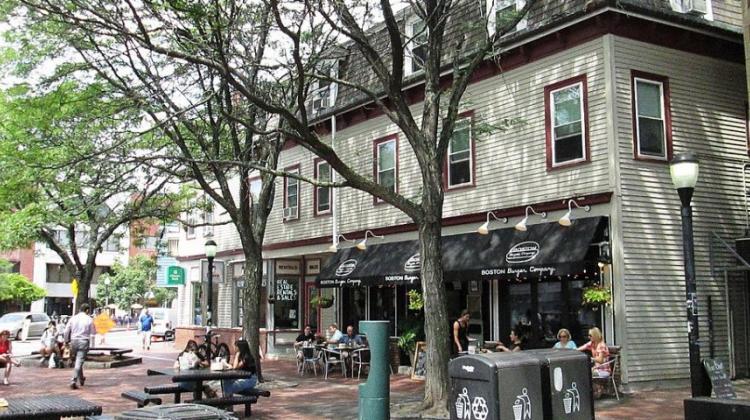Researching Citizens Relationship to Urban Form and Amenities

Davis Square, Somerville, Massachusetts, Beyond My Ken.
Urban form and mobility preferences
Urban planners and designers as well as city governance increasingly promote urban walkability as a means to tackle climate change, improve residents’ quality of life, and address socioeconomic inequities that auto-oriented development tends to exacerbate. In order to forecast the effects that envisioned changes to the built-environment could have on foot traffic, cities increasingly require quantitative, predictive pedestrian flow models.
In their paper, We shape our buildings, but do they then shape us? A longitudinal analysis of pedestrian flows and development activity in Melbourne, Andres Sevtsuk, Rounaq Basu, and Bahij Chancey utilize a recently developed flow model to examine the longitudinal impacts of changes in the built environment on pedestrian activity in Melbourne Australia.Their model leverages address-level analysis of pedestrian flows, combining trip-generation, trip-distribution, and route-choice into an accessibility-driven framework.
“The paper presents a framework for how cities could implement Pedestrian Impact Assessments to examine how proposed development projects are likely going to influence pedestrian activity around them,” said Andres Sevtsuk, Associate Professor of Urban Science and Planning. “Pedestrian Impact Assessments are urgently needed to complement traditional Traffic Impact Assessments that focus on traffic mitigation and infrastructure improvements for personal vehicles.”
Their findings, based on years of automated pedestrian count data analysis from Melbourne, Australia, suggest that pedestrian flows are strongly shaped by the structure of the built environment and highlight how real estate developments, residential and employment shifts that take place each year play a key role explaining changes in pedestrian flows in the city. This opens the possibility of “pedestrian impact assessments,” to inform and strengthen calls for pedestrian oriented development.
Public health, mobility, and urban amenities
How has our relationship to urban amenities - experiences, goods, and services - altered by the COVID19 pandemic? What might these trends suggest about the long-term economic recovery process for cities after the pandemic?
In their paper, The impact of COVID-19 on trips to urban amenities: Examining travel behavior changes in Somerville, MA, Andres Sevtsuk, Annie Hudson (MCP ‘20), Dylan Halpern (MCP ‘20), Rounaq Basu, Kloe Ng, and Jorrit de Jong (Harvard Kennedy School) examine smartphone data to measure and map how people’s visitation preferences to urban amenity clusters changed and evolved in response to the COVID-19 pandemic in 2020. The paper’s findings offer insights for decision-makers to understand how the pandemic and future health emergencies might impact amenity-related trips, which form a large share of all urban travel, and where the greatest needs for intervention and policy support may exist.
“The use of monthly destination choice models that were calibrated on very recent, incoming trip-making data from SafeGraph, provided a unique opportunity to analyze changing population preferences almost in real time, as the pandemic continued and shifted,” said Annie Hudson, a researcher on the project and manager of the MIT Mobility Initiative.


